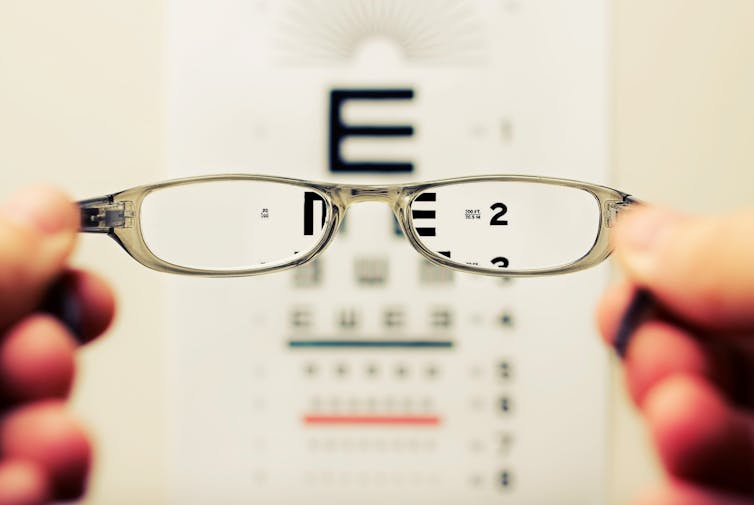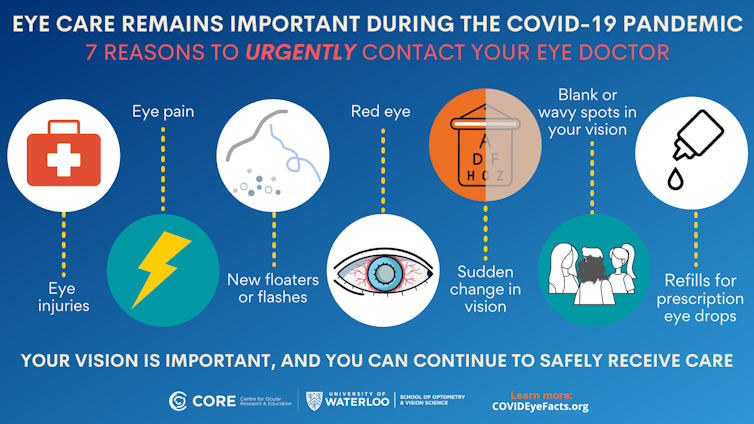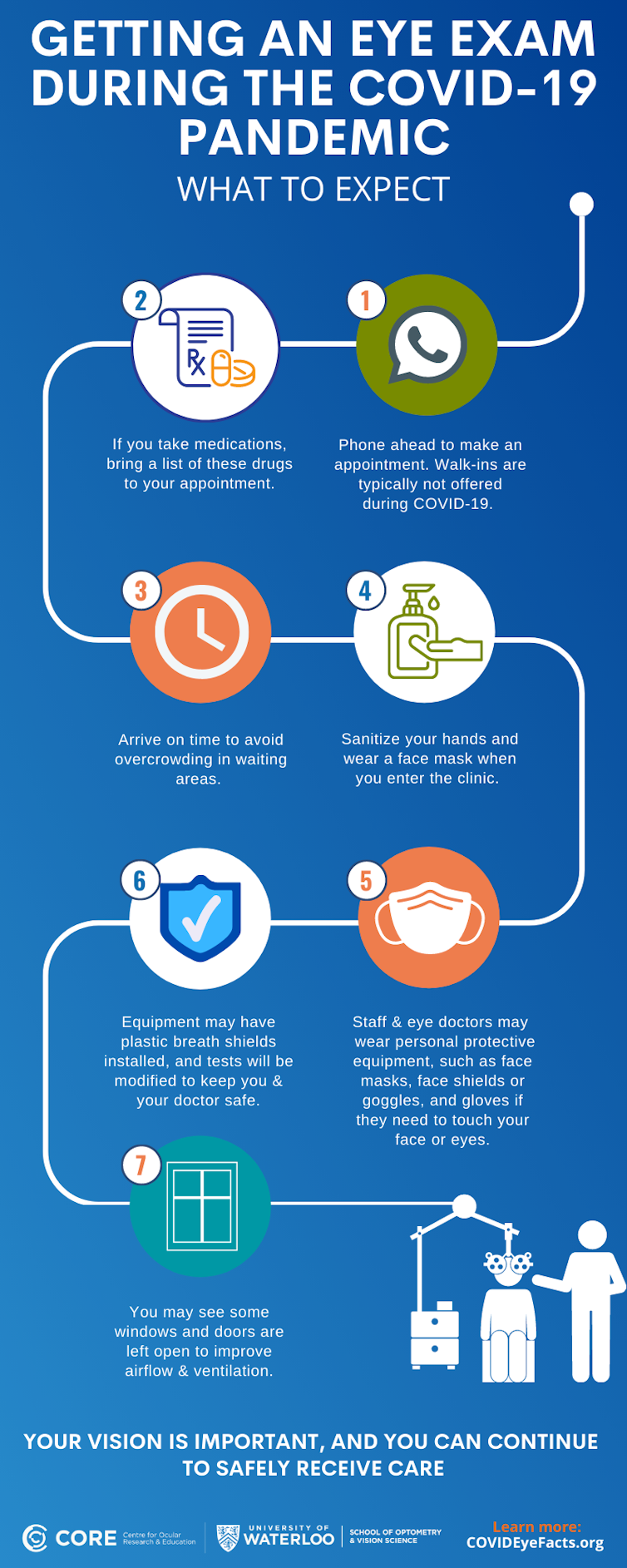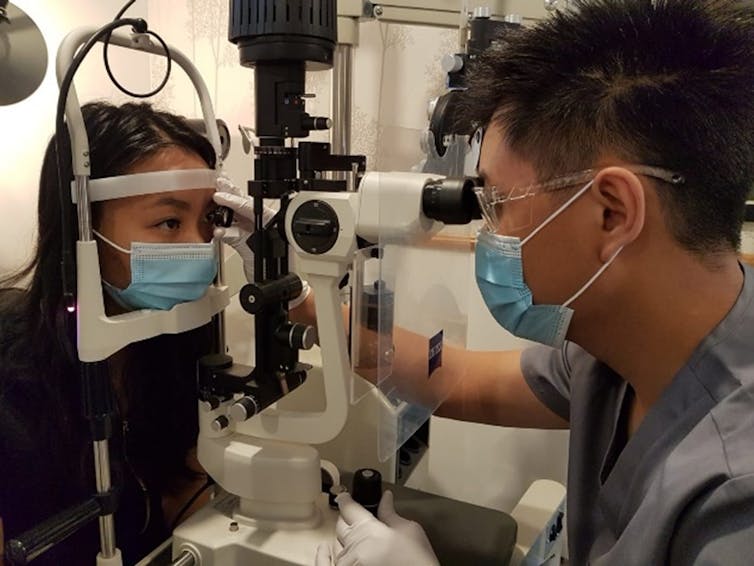
Alison Ng, University of Waterloo and Mike Yang, University of Waterloo
Since COVID-19 emerged, access to eye care has continued to change. Lockdowns and concerns about virus exposure have caused people of all ages to cancel and delay routine appointments, raising red flags among eye-care professionals. As the pandemic continues into its second year, can ocular health be neglected any longer?
Our team of optometrists and clinical scientists at the Centre for Ocular Research & Education (CORE) hear the confusion and concerns about people’s eyes during COVID-19. Addressing the most common questions — many of which we keep up to date at COVIDeyefacts.org — can help you and your family maintain the best vision while staying safe.
Can I set aside my eye health?
A survey commissioned by Fight for Sight, a charity in the United Kingdom devoted to eye research, reveals that one in five adults in the U.K. are less likely to visit an eye doctor during the pandemic. This is despite finding that one-third of adults have reported deteriorating eyesight since the pandemic began.
Thousands of patients who previously sought regular treatment for chronic, sight-threatening eye conditions are missing vital appointments that help to preserve their vision.
Ophthalmologists report that patients with retinal conditions such as macular degeneration and diabetic retinopathy are skipping hospital appointments for sight-preserving injections, which often leads to devastating consequences such as disease progression, giving rise to significant vision loss.
What eye conditions cannot wait?
Putting aside COVID-19 concerns, there are seven reasons to urgently call your eye doctor, no matter the age of the patient:
Eye injury
Eye pain
If you notice new floaters or flashes of light
Red eye
A sudden change in vision
Blank or wavy spots
Refills for prescription drops
Delaying care in these situations may result in poor outcomes, including vision loss. Some clinics offer telephone consultations to triage care and discuss options. When in doubt, call.

Have eye exams changed?
As with every aspect of our lives, significant modifications have been made to the way eye-care professionals and clinics are operating, putting safety first. You will see spaced appointments and physical distancing, staff and doctors using protective equipment, modifications to some tests, accommodations for ventilation and more — with the same commitment to patient health.

Do I really need to have an exam?
When your eye doctor is shining those bright lights into your eyes, they are checking for signs that might point to painless and progressive diseases that may not be apparent.
For example, glaucoma affects the optic nerve, causing gradual irreversible vision loss. It is the leading cause of irreversible blindness globally and more than 80 per cent of those affected experience silent vision loss. Often, patients with glaucoma fail to notice any symptoms until 40 per cent of nerve damage has occurred. Early detection and timely treatment limits further damage.

Can I trust online sources for care information?
Let’s say you wake up with red eyes. Dr. Google will likely tell you that you have conjunctivitis, or pink eye — a simple eye infection that disappears without consequences. However, increased eye redness is not only caused by pink eye. This is referred to as a “differential diagnosis” or “what else could this be?”
For example, inflammation of the iris also presents as a red eye. Without timely treatment involving prescription eye drops, this condition progresses to worsening pain, light sensitivity, blurred vision and can lead to cataracts, glaucoma or permanent vision loss. The only way to confirm the cause of an eye problem and get appropriate treatment is to see an eye care professional.
What about the kids?
With estimates that half of the world’s population will be myopic (nearsighted) by 2050 and the time that kids spend on screens skyrocketing, the impact on their vision might be around long after this pandemic is over.
A CORE study found almost one-third of Canadian school children aged 11 to 13 were myopic, and 35 per cent of myopic children did not have glasses or contact lenses to help them see better. Some children simply do not know they have an eye problem, because they assume that everyone sees the same.
Is it safe to get an eye exam?
Every effort is being made to ensure that staff, doctors and patients are kept safe. Clinic personnel are expected to stay home and isolate if they have symptoms of COVID-19 in the same way that patients are.
In a time of continued uncertainty, one thing remains clear: your vision is important and you can take steps to keep it that way, even during a pandemic.![]()
Alison Ng, Clinical Scientist at the Centre for Ocular Research & Education (CORE), University of Waterloo and Mike Yang, Clinical Scientist at Centre for Ocular Research & Education, University of Waterloo
This article is republished from The Conversation under a Creative Commons license. Read the original article.

